The Natural Resources Council of Maine awarded grants to six Maine middle schools through our “Engaging Maine Middle School Students in Protecting the Nature of Maine” program, which we started in 2015. Each of the schools began their projects in early 2020, though due to the COVID-19 pandemic, schools, of course, have gone to online learning, so not all projects will be completed. Before schools were closed, we received photos and an update from All Saints Catholic School in Bangor, Maine, and want to share it with you here. If schools are able to continue their projects online, we will share their progress with you later this spring.
Seventh-grade students at All Saints Catholic School in Bangor are raising Atlantic salmon (Salmo salar) in a classroom tank, preparing them for release in the Kenduskeag River sometime in early May. The eggs come from the Craig Brook National Fish Hatchery in East Orland where they are spawned from wild Atlantic salmon stock native to specific Maine rivers. This year, the project is being supported by a grant from the Natural Resources Council of Maine.
While the salmon eggs have been in their insulated tank for just two weeks, the students have been preparing for them for much longer. They have done research on a wide range of topics pertaining to wild Atlantic salmon. Each student prepared a demonstration and board, which they presented to the community during a school-wide curriculum fair in late January.
Their science teacher, Mary O’Shea, attended the Atlantic Salmon Ecosystems Forum at the University of Maine in January, and came back to school with a wealth of ideas for student projects based on the current research presented at the conference and poster session.
Here’s what some of the students had to say about their projects:
Henry said, “By researching salmon scales…I learned that under a microscope the scales looked and acted like rings on a tree stump.”
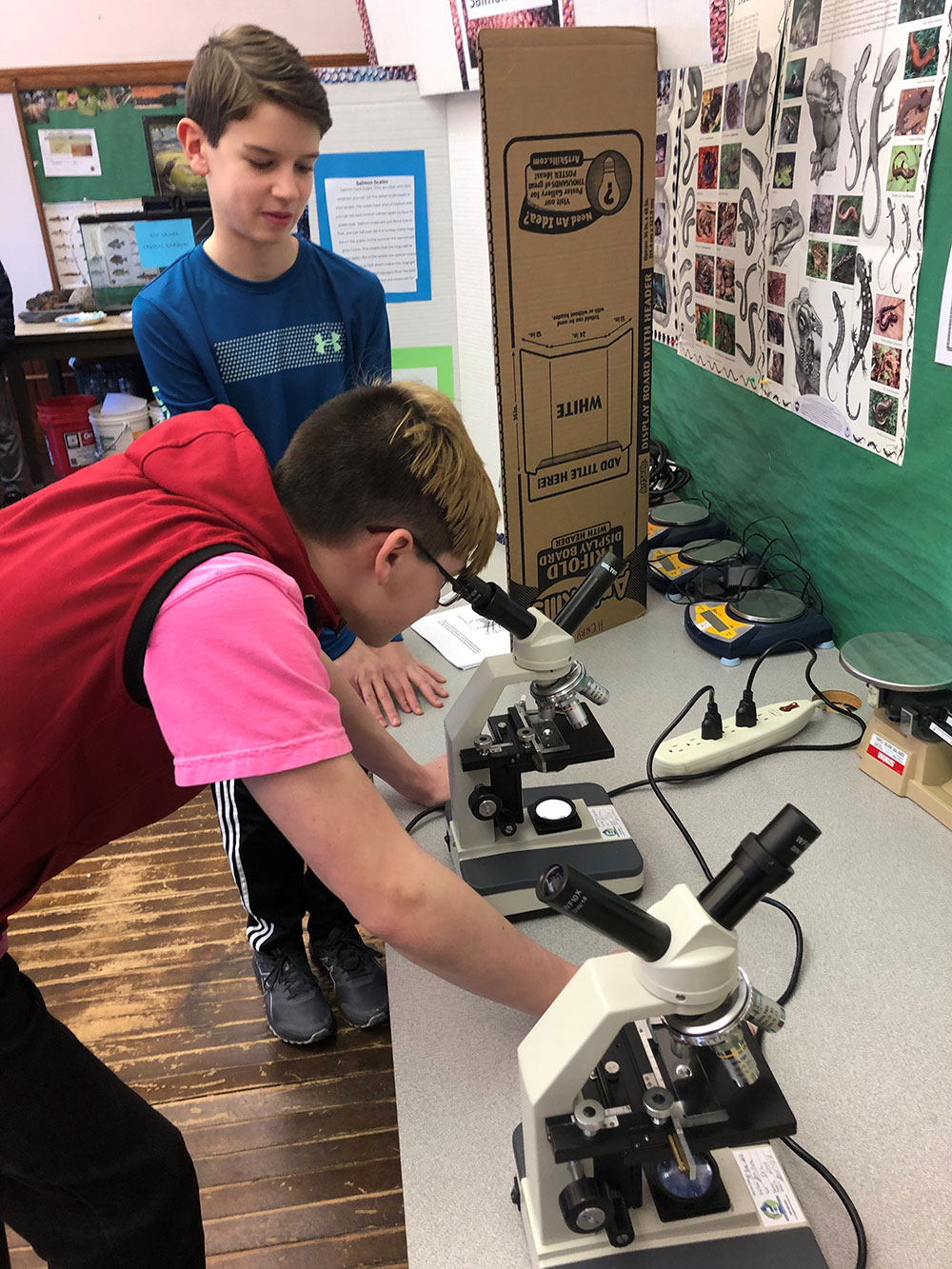
Henry & Caden look at salmon scales
Katherine, whose project involved answering the question, “Where in the world are the Atlantic salmon?” said, “I love to learn about where animals live….because I would love to see them in the wild.”
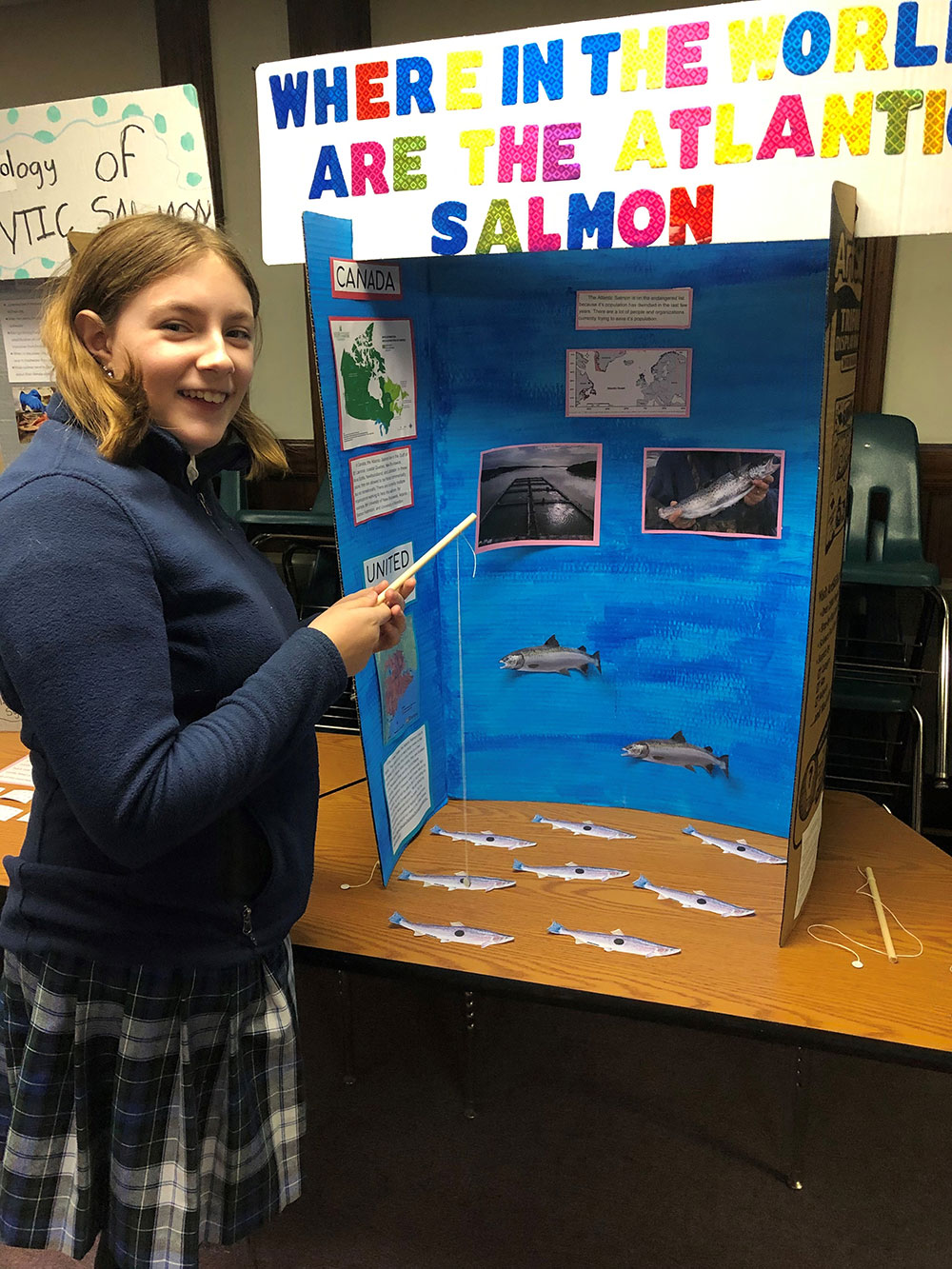
Katherine: Where in the World are the Salmon?
Gretta, who looked into research aimed at improving access to upstream habitat. said, “I learned more about culverts being removed than people think they know.”
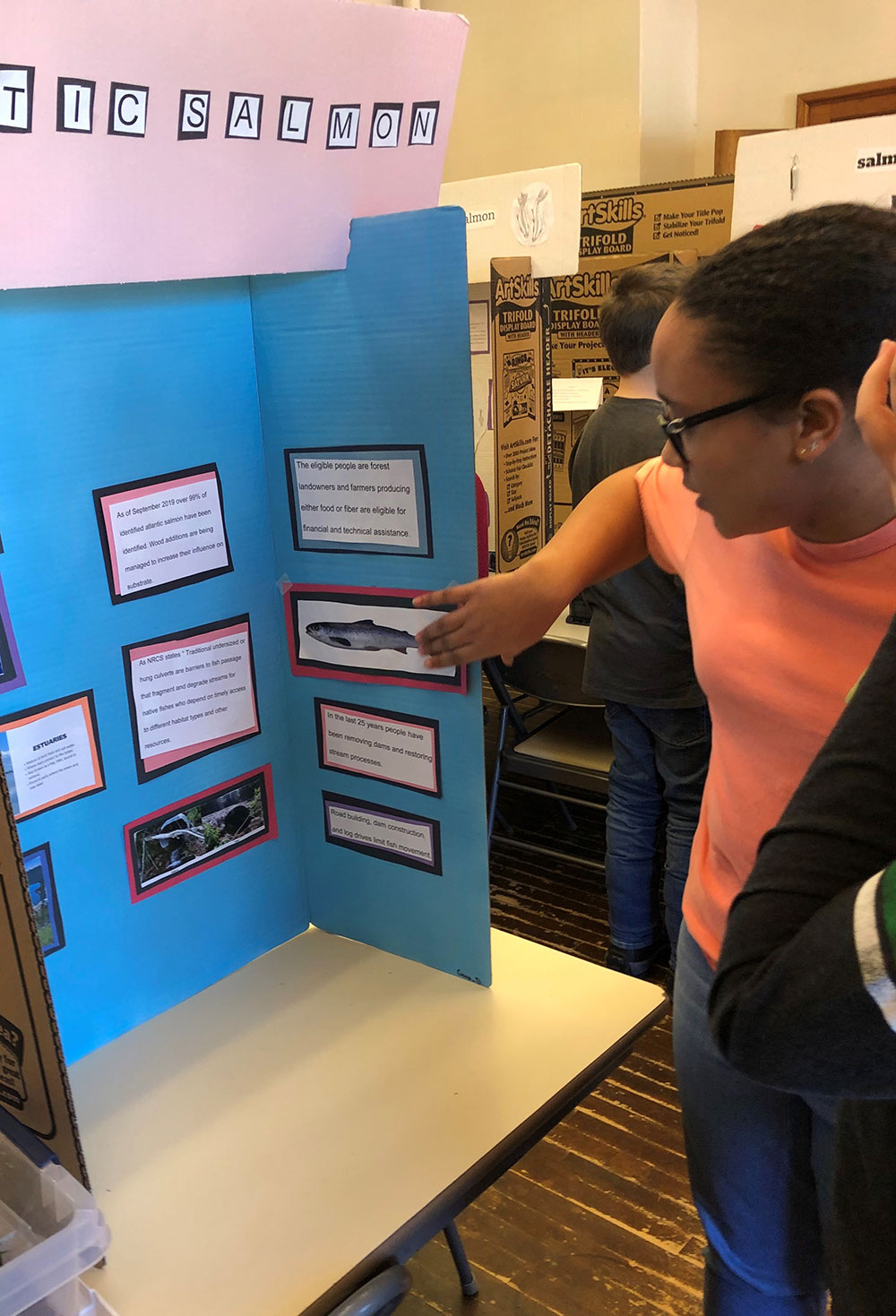
Gretta: Habitat Access for Atlantic Salmon
Julia, whose project looked at the anatomy and physiology of the Atlantic salmon, found that “while dissecting the fish…it was so slippery I dropped it onto the floor!”
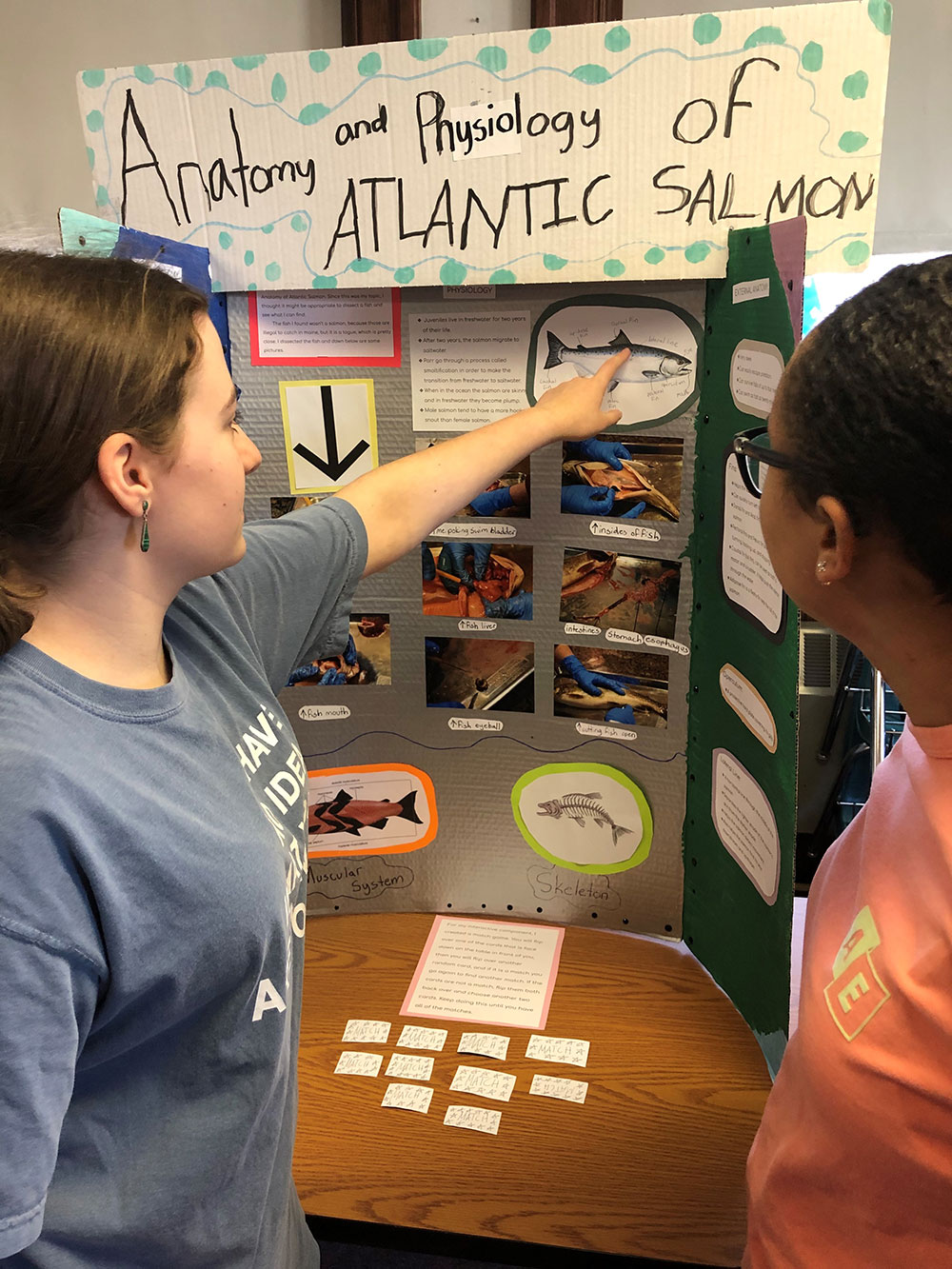
Julia and Julia: Anatomy and Physiology of Atlantic Salmon
Tyler, our expert on the life cycle of the Atlantic salmon shared, “It is a really incredible journey that these fish take just for food!”
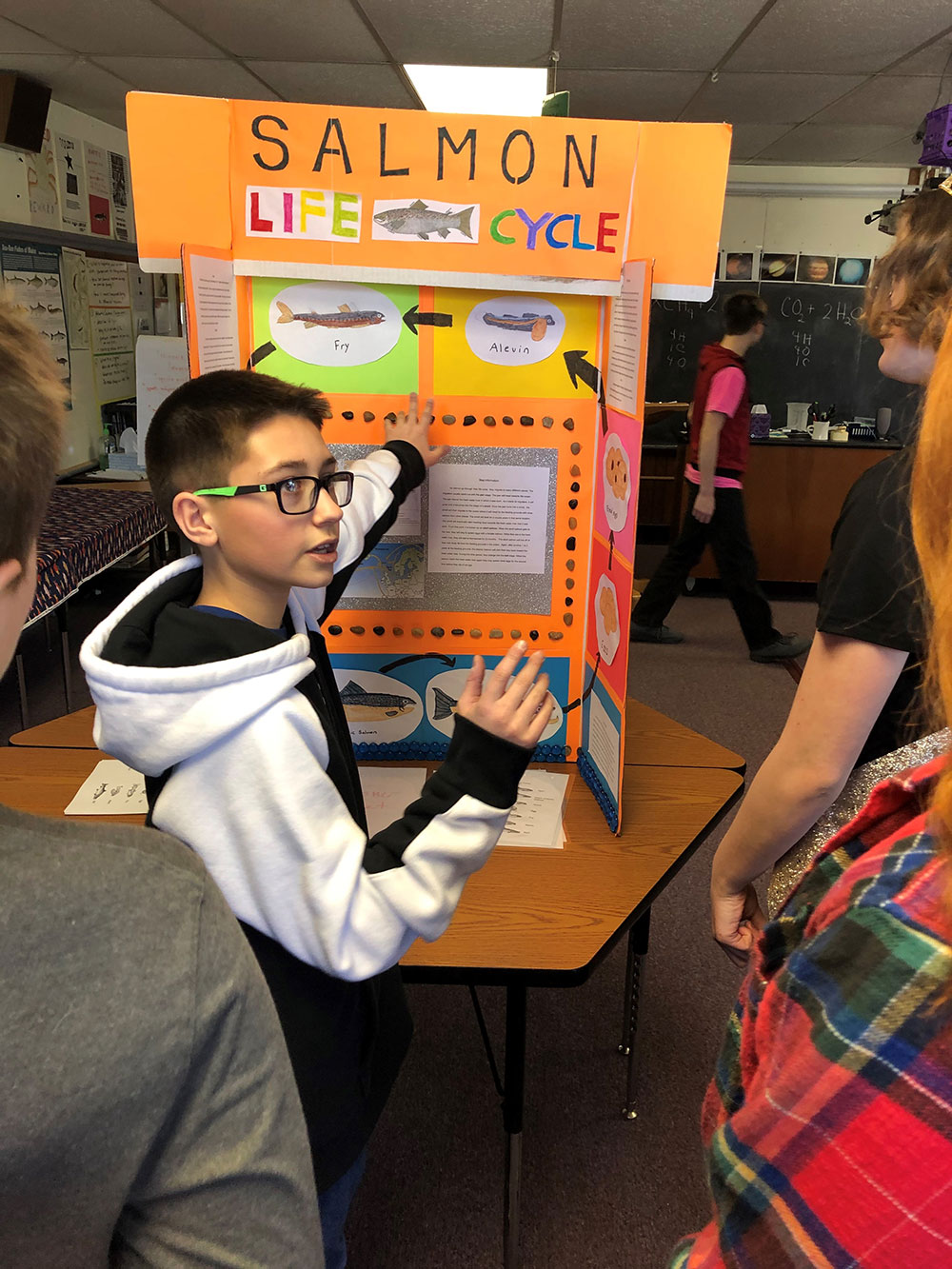
Tyler: Salmon Life Cycle
Abby, who investigated Atlantic salmon aquaculture, “learned that this process is beneficial for us so we can eat healthy.”
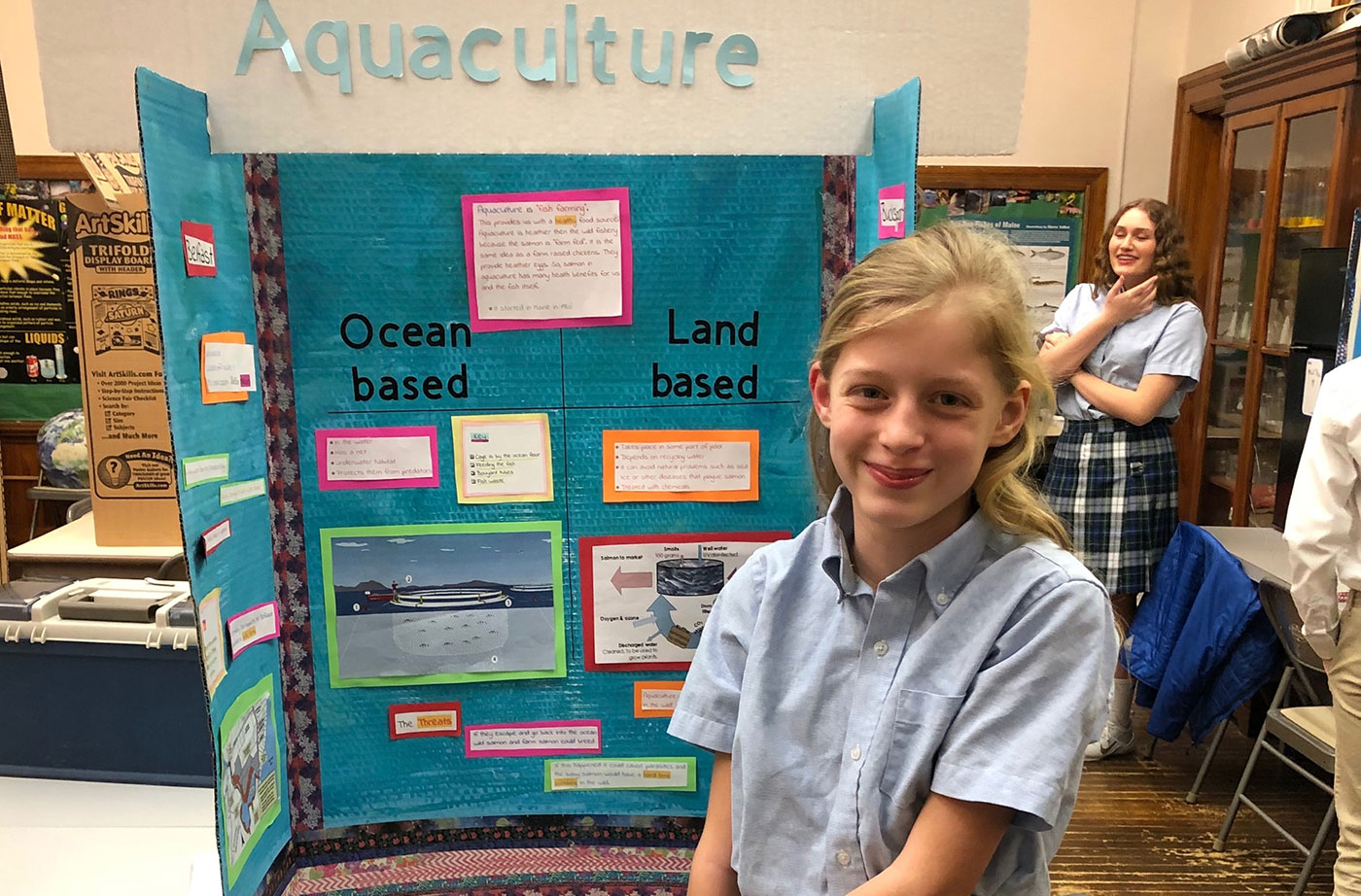
Abby: Salmon Aquaculture
Taylor, who learned about the nutritional benefits of salmon, found “that salmon gives you almost all the vitamins you need on a day to day basis.”
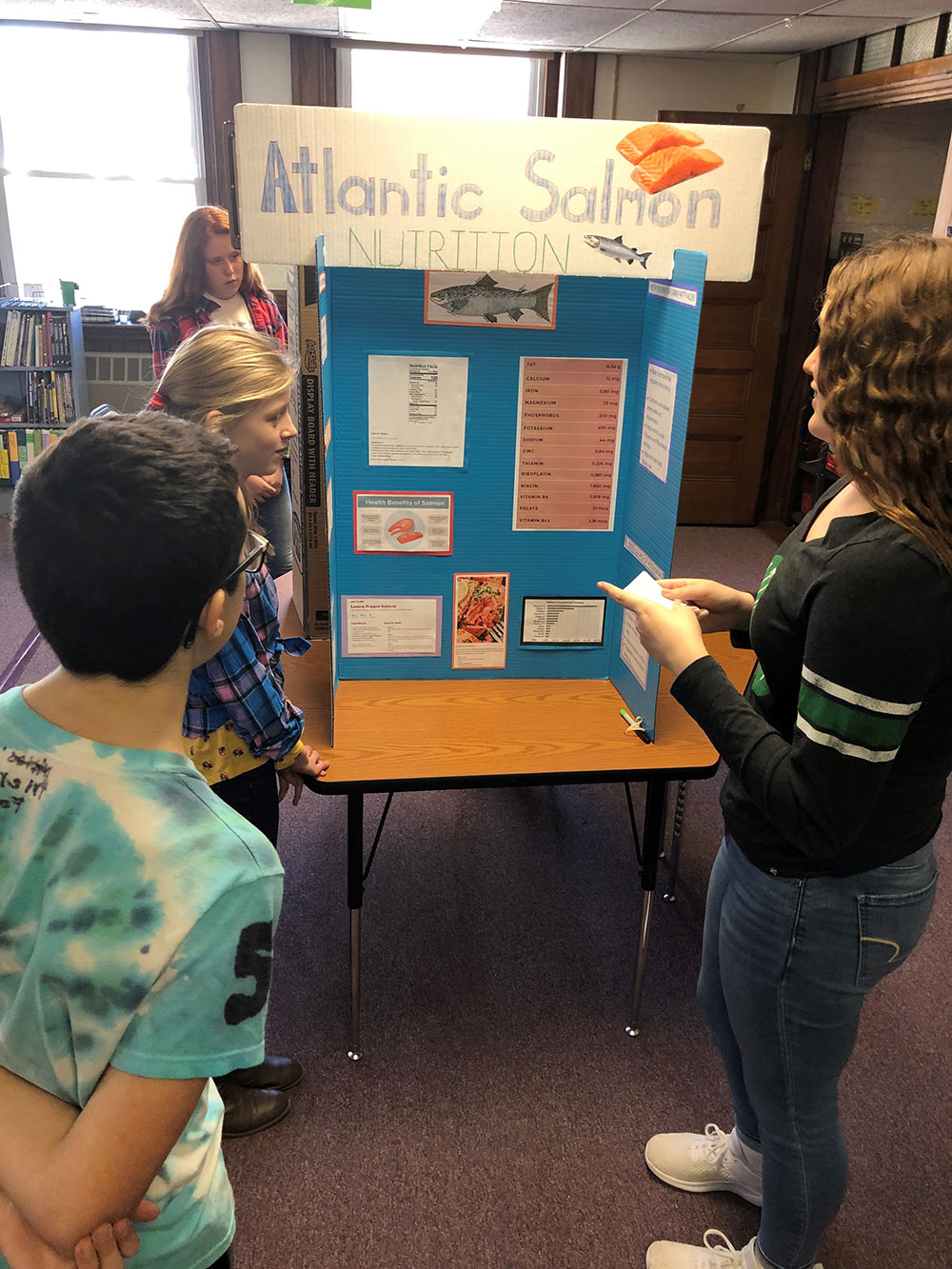
Taylor: Atlantic Salmon Nutrition
Going forward, the students will be observing and sketching the salmon as the eggs develop into fry in the chilled tank. When the fry are ready, and the water temperature in the tank matches the river temperature, the students will take a final, all-day field trip. The salmon will be released in the morning, and then students will take a tour of the Craig Brook National Fish Hatchery and enjoy a picnic lunch at Alamoosook Lake in East Orland!










Leave a Reply